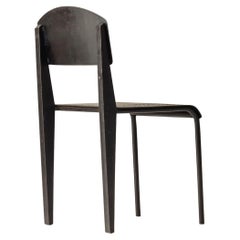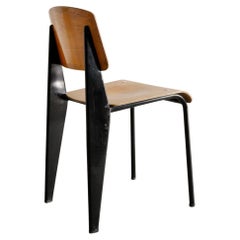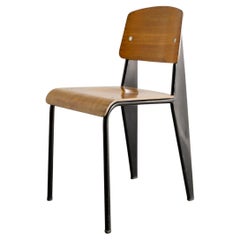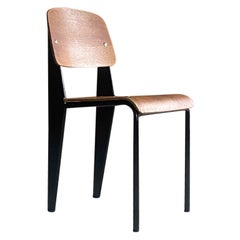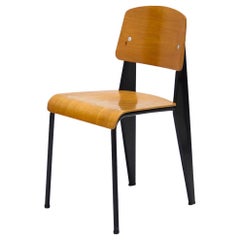Prouve 305
Vintage 1950s French Mid-Century Modern Side Chairs
Metal
Vintage 1950s French Mid-Century Modern Dining Room Chairs
Metal
Vintage 1950s French Mid-Century Modern Office Chairs and Desk Chairs
Metal
Recent Sales
Vintage 1950s French Mid-Century Modern Side Chairs
Steel
Vintage 1950s French Mid-Century Modern Chairs
Steel
20th Century French Mid-Century Modern Chairs
Vintage 1950s French Mid-Century Modern Chairs
Metal
Vintage 1950s French Office Chairs and Desk Chairs
Metal
Vintage 1950s French Mid-Century Modern Chairs
Steel
Vintage 1950s French Office Chairs and Desk Chairs
Metal
Vintage 1950s French Office Chairs and Desk Chairs
Metal
Vintage 1950s French Mid-Century Modern Chairs
Steel
Mid-20th Century French Mid-Century Modern Dining Room Chairs
Metal
Vintage 1950s French Mid-Century Modern Chairs
Steel
Vintage 1950s French Mid-Century Modern Chairs
Metal
Vintage 1950s French Mid-Century Modern Chairs
Metal
Vintage 1950s French Mid-Century Modern Chairs
Steel
Vintage 1950s French Industrial Chairs
Steel
20th Century French Chairs
Steel
20th Century French Chairs
Steel
People Also Browsed
Vintage 1960s Italian Coffee and Cocktail Tables
Wood
Vintage 1950s Italian Mid-Century Modern Lounge Chairs
Velvet
Early 20th Century French French Provincial Dining Room Tables
Oak
Late 20th Century Japanese Mid-Century Modern Floor Lamps
Metal
21st Century and Contemporary Italian Modern Chandeliers and Pendants
Plastic
Vintage 1950s Italian Mid-Century Modern Console Tables
Beech
21st Century and Contemporary American Modern Candle Sconces
Stainless Steel
Vintage 1950s French Chairs
Steel
Vintage 1970s American Post-Modern Chairs
Steel
21st Century and Contemporary American Mid-Century Modern Dining Room Ch...
Chrome
Vintage 1960s German Modern Side Chairs
Steel
2010s Belgian Modern Sofas
Linen
2010s Belgian Modern Club Chairs
Linen
Vintage 1960s Italian Mid-Century Modern Vanities
Fabric, Mirror, Laminate, Rosewood
Vintage 1970s Italian Space Age Wall Lights and Sconces
Metal
Vintage 1970s Danish Mid-Century Modern Armchairs
Sheepskin, Oak
Jean Prouvé for sale on 1stDibs
Engineer and metalsmith, self-taught designer and architect, manufacturer and teacher, Jean Prouvé was a key force in the evolution of 20th-century French design, introducing a style that combined economy of means and stylistic chic. Along with his frequent client and collaborator Le Corbusier and others, Prouvé, using his practical skills and his understanding of industrial materials, steered French modernism onto a path that fostered principled, democratic approaches to architecture and design.
Prouvé was born in Nancy, a city with a deep association with the decorative arts. (It is home, for example, to the famed Daum crystal manufactory.) His father, Victor Prouvé, was a ceramist and a friend and co-worker of such stars of the Art Nouveau era as glass artist Émile Gallé and furniture maker Louis Majorelle. Jean Prouvé apprenticed to a blacksmith, studied engineering, and produced ironwork for such greats of French modernism as the architect Robert Mallet-Stevens. In 1931, he opened the firm Atelier Prouvé. There, he perfected techniques in folded metal that resulted in his Standard chair (1934) and other designs aimed at institutions such as schools and hospitals.
During World War II, Prouvé was a member of the French Resistance, and his first postwar efforts were devoted to designing metal pre-fab housing for those left homeless by the conflict. In the 1950s, Prouvé would unite with Charlotte Perriand and Pierre Jeanneret (Le Corbusier’s cousin) on numerous design projects. In 1952, he and Perriand and artist Sonia Delaunay created pieces for the Cité Internationale Universitaire foundation in Paris, which included the colorful, segmented bookshelves that are likely Prouvé’s and Perriand’s best-known designs. The pair also collaborated on 1954’s Antony line of furniture, which again, like the works on 1stDibs, demonstrated a facility for combining material strength with lightness of form.
Prouvé spent his latter decades mostly as a teacher. His work has recently won new appreciation: in 2008 the hotelier Andre Balazs purchased at auction (hammer price: just under $5 million) the Maison Tropicale, a 1951 architectural prototype house that could be shipped flat-packed, and was meant for use by Air France employees in the Congo. Other current Prouvé collectors include Brad Pitt, Larry Gagosian, Martha Stewart and the fashion designer Marc Jacobs.
The rediscovery of Jean Prouvé — given not only the aesthetic and practical power of his designs but also the social conscience his work represents — marks one of the signal “good” aspects of collecting vintage 20th-century design. An appreciation of Prouvé is an appreciation of human decency.
Find antique Jean Prouvé chairs, tables, chaise longues and other furniture on 1stDibs.
Finding the Right Seating for You
With entire areas of our homes reserved for “sitting rooms,” the value of quality antique and vintage seating cannot be overstated.
Fortunately, the design of side chairs, armchairs and other lounge furniture — since what were, quite literally, the early perches of our ancestors — has evolved considerably.
Among the earliest standard seating furniture were stools. Egyptian stools, for example, designed for one person with no seat back, were x-shaped and typically folded to be tucked away. These rudimentary chairs informed the design of Greek and Roman stools, all of which were a long way from Sori Yanagi's Butterfly stool or Alvar Aalto's Stool 60. In the 18th century and earlier, seats with backs and armrests were largely reserved for high nobility.
The seating of today is more inclusive but the style and placement of chairs can still make a statement. Antique desk chairs and armchairs designed in the style of Louis XV, which eventually included painted furniture and were often made of rare woods, feature prominently curved legs as well as Chinese themes and varied ornaments. Much like the thrones of fairy tales and the regency, elegant lounges crafted in the Louis XV style convey wealth and prestige. In the kitchen, the dining chair placed at the head of the table is typically reserved for the head of the household or a revered guest.
Of course, with luxurious vintage or antique furnishings, every chair can seem like the best seat in the house. Whether your preference is stretching out on a plush sofa, such as the Serpentine, designed by Vladimir Kagan, or cozying up in a vintage wingback chair, there is likely to be a comfy classic or contemporary gem for you on 1stDibs.
With respect to the latest obsessions in design, cane seating has been cropping up everywhere, from sleek armchairs to lounge chairs, while bouclé fabric, a staple of modern furniture design, can be seen in mid-century modern, Scandinavian modern and Hollywood Regency furniture styles.
Admirers of the sophisticated craftsmanship and dark woods frequently associated with mid-century modern seating can find timeless furnishings in our expansive collection of lounge chairs, dining chairs and other items — whether they’re vintage editions or alluring official reproductions of iconic designs from the likes of Hans Wegner or from Charles and Ray Eames. Shop our inventory of Egg chairs, designed in 1958 by Arne Jacobsen, the Florence Knoll lounge chair and more.
No matter your style, the collection of unique chairs, sofas and other seating on 1stDibs is surely worthy of a standing ovation.
